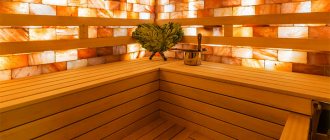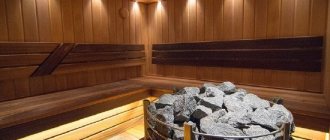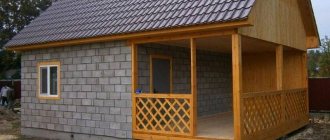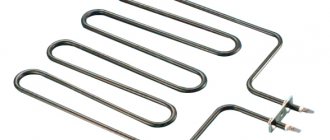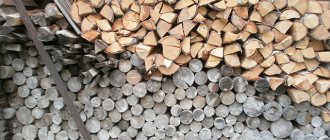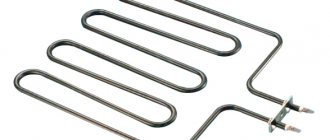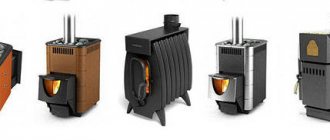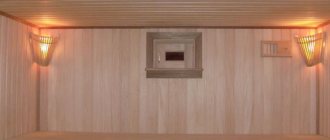Warm greetings to you, readers of my humble blog!
Did you know that there is fabulous magic in the atmosphere of the steam room? It gives its admirers magical beauty, precious youth and desired health. The formation of miraculous notes in the bath is facilitated by ancient magic, awakening from the magical aromas of herbs, wood and stones.
Have you stocked up on herbs that exude an exciting aroma? Amazing. Armed with firewood that captivates with its intoxicating smell? Perfect. Have you bought stones for the bath that caress with healing powers? Don't know which type to choose? In this case, dear readers, today I will tell you about stones that help create soft, gentle and light steam.
Important Features
Let's start by highlighting what is most significant for a bathhouse. We want:
- so that the stone serves for a long time without or with minor replacement;
- so that for a long time after the stove is turned off, the heat that is essential for heating emanates from it;
- the bath heats up faster during operation of the stove ;
- so that health does not suffer from stones, but, on the contrary, improves.
- so that the stones are not too expensive (ideally, they are free))).
Different stones for a bath: which ones are better?
These are the requirements. Translating into the language of physics, we need heat-resistant , heat-intensive stones, with good heat transfer . Plus, of course, they are cheap and environmentally friendly . It would be optimal to choose those with all indicators above average. (By the way, ordinary water has the highest heat capacity; it is twice as high as that of brick for the same volume.)
Bath stones: which ones are better in terms of durability
There are two approaches: those rocks that last longer in the bath are those that are of igneous, deep origin and more or less alkaline composition (that is, the amount of silica is no more than 50%). But this is a good definition for geologists, and ordinary people are better able to navigate among the numbers. We will provide the corresponding sign, but we must warn:
IMPORTANT! The service life of a stone depends on so many factors that it is impossible to predict . The deposit, composition, impurities, type of stove, frequency of using the bathhouse, even the size and shape of the stones matter.
First of all, of course, the mineral composition of the rock and the heating temperature in the furnace . People far from geology believe that stones have the same composition if they are called by the same name. In fact, the mineral composition is variable , because the conditions of formation differ in some way. And there is much more, for example, the replacement affecting part of the production from the same field. Therefore, you need to look at specific samples.
However, here is the promised table, which allows you to very roughly estimate the heat resistance of the stone and the time it will live in the oven :
LONGEVITY TABLE
| Name | Term |
| Nephritis | 10 years |
| Jade | 4 years |
| Jasper | 2 years |
| Chromite | 5 years |
| Quartz | 3 years |
| Soapstone chlorite | 3.5 years |
| Dunit | 6 years |
| Quartzite | 4.5 years |
| Porphyrite | 5 years |
| Gabbro-diabase | 2 years |
| Cast iron | 6 years |
| Porcelain | 10 years |
As you can see, in terms of longevity, there are two candidates for the best stones for a sauna stove - jade and ceramic balls . We would also add here indestructible balls made of food-grade stainless steel . This trinity will really live for a long time in a sauna stove. But each of these materials will cost a pretty penny. (By the way, ceramics also vary in composition.)
Which stones are best for a steam bath in terms of heat capacity?
If you are not in a hurry when you are going to take a steam bath, then spare no time and firewood for the most heat-intensive stones. Here is a small table that lists not all, but many of the bath stones:
TABLE OF DENSITY, THERMAL CONDUCTIVITY AND HEAT CAPACITY
| Breed | Density g/cm³ | Thermal conductivity coefficient W/(m*K) | Specific heat capacity kJ/(kg*K) |
| Basalt | 2,6-3,25 | 0,4-3,5 | 0,5-2,1 |
| White quartz | 2,6—2,65 | — | 0,75 |
| Gabbro-diabase | 2,79-3,3 | 1,7-3,3 | 0,8-0,9 |
| Granite | 2,34-2,76 | 1,1-3,9 | 0,2-1,5 |
| Dolerite | 2,79 — 3,3 | see basalt, gabbro-diabase | see basalt, gabbro-diabase |
| Dunit | 3,28 | 1,1-1,9 | 0,6-0,8 |
| Jade | 3,25-3,35 | 2,3-3,6 | 0,88 |
| Raspberry quartzite | 2,68 | 2,6-7,6 | 0,7-1,3 |
| Jade (amphibolite) | 2,95-3,4 | 1,6-2,9 | 1,0-1,2 |
| Peridotite | 3,2-4,4 | 3,8-4,9 | 0,9-1,1 |
| Porphyrite | 2,67 | 0,7-3,5 | 1,6-1,7 |
| Rodingitis | 2,99 | — | — |
| Soapstone chlorite | 2,7-2,98 | 3,3 | 0,98 |
| Chromite | 4,5-5,0 | — | — |
| Jasper | 2,6 | — | — |
Again, the table clearly shows that the best stone for a bath in a steam room in terms of heat capacity is porphyrite. basalt into account due to the wide spread of values, but its relatives - dolerite and gabbro-diabase, although they do not have the same high heat capacity, are still more than competitive - they benefit due to their good heat capacity and low price .
You may also have noticed that the values are mostly around one - a little more, a little less, but there is no big scatter.
By the way, the same clay can, in certain conditions, accumulate heat in greater quantities than any bath rock - clay has values of up to 3.6 in the wet state (due to heat-intensive water). This means that the choice is always made simultaneously according to several criteria. Let's continue to consider them.
Stones for the stove in the bathhouse: which ones are better for health safety
This is not an idle question. First, let’s find out why bath stones can be dangerous in general. Firstly, radiation . Secondly, sulfides and other impurities , which burn out at high temperatures to form compounds harmful to humans. Thirdly, mechanical destruction, the result of which is fine dust , harmful to breathing.
Radiation
If a rock is formed at great depths in the mantle, then it will, in principle, not contain radioactive elements that are concentrated in the earth's crust. jadeite , dunite , and peridotite without any fear . All other breeds were formed higher in one way or another. But most of them do not pose any radiation hazard. The exception is granite, which may well have an increased background radiation. But, since it does not meet other characteristics, it can be forgotten.
Sulfides
Yes, this is an unpleasant “additive” to stone, which is often found in nature. There are many complaints about Karelian stones.
Sulfide decomposes at high temperatures, forming sulfur oxides, which form acids with water. Inhaling air containing sulfuric acid vapor is extremely undesirable for people.
Sulfides are easily identified visually - as gray and dark gray veins and spots with a metallic sheen or as golden crystals on the surface of the stone.
The photo gives an idea of what the sulfide may look like on the surface. But they are all dark gray with metallic. shiny or yellow, like pyrite. Photo source: Rosettes of Molybdenite, by subarcticmike's, licensed under CC BY
IMPORTANT! Follow the rule that the amount of sulfides on the surface of the stone should not be more than 5% of the total surface area. Of course, you will have to determine by eye, but still. If there are less than 5% of them, then they will simply burn out in 1-2 fires without a trace. Although it will be unpleasant, it will not last long.
Sulfides are the scourge of many stones ; there is no point in listing them, just be more careful when choosing.
Other impurities
Among other impurities we would include creosote and other substances of technogenic origin. The best from the point of view of their absence will be stones that were not paving stones or were not picked up near the railway or industrial facilities .
Dust
All stones are destroyed sooner or later, turning into sand and dust. Therefore, the heater needs to be cleaned regularly. As for soapstone, do not try to wash it clean - it tends to secrete talc and scaly chlorite, it will do this all the time it lies in the heater. Therefore, if you have a choice, then make it in favor of soapstone .
Or just put other stones that don't generate dust. It is very good for finishing. So, the best ones in terms of safety are certified stones without impurities.
Best stones by cost
Everything is simple here: better is cheaper. And gabbro-diabase remains the cheapest of the purchased stones.
We can quite reasonably recommend this particular stone, because it has suitable heat resistance and heat capacity. It is suitable for a heater due to two main characteristics. Whether it will collapse in 2 years, as the leaflet compiled by the sellers promises, or whether it will last 6-10 years depends on the case and type of stove, but this applies to all stones. Some people pick up pebbles in the forest and they last for 12 years; for others, jade does not last for a year. There are fakes and low-quality samples, but if the stone is cheap, then it is easy to replace.
Video on the topic
IMPORTANT! Complaints about the odor emitted by gabbro-diabase are complaints about sulfides . They are not always attached to the stone. Inspect samples before purchasing.
Well, you get the general idea, let's summarize what has been said.
Quality and size of stones
The optimal stone size for a heater is considered to be 5–21 cm. Stones of three shapes are used for laying in the stove:
- pellets (sea and river pebbles);
- crushed stone;
- embanked stone - medium in appearance, with a smoothed shape.
It must be borne in mind that unprocessed crushed stone has a larger surface area than bunded or pelletized stone, which means it will give off more heat.
The number of stones in the heater is determined as 1:50 in relation to the volume of the steam room.
Photo gallery: shapes of stones for laying in the oven
The pellet is suitable for firing in a furnace, but has a small surface area
Crushed stone gives off a large amount of heat
The bunded stone is of medium size and will provide a sufficient level of heat
What is the best stone for a bath?
There can be no definite answer here. We said:
- the most durable - jade, ceramics and stainless steel;
- the most heat-intensive is porphyrite;
- the safest are jadeite, dunite, peridotite (and all of them are not immune to sulfides, by the way)
- the cheapest is gabbro-diabase.
And if we add to this what the owners of saunas with heaters filled with jade say... The quality of the steam also matters, right?
Therefore, we are still forced to cheat a little and say a completely expected banality:
- if you have the financial opportunity , it is worth buying jade, jadeite, ceramics and stainless steel;
- if the bathhouse is budget , then it is better to opt for porphyrite, gabbro-diabase and dunite.
And, of course, you are free to mix stones - natural or artificial - at your discretion.
We do not recommend taking quartz, basalt, serpentine (serpentinite) , rodingite, granite and jasper.
Soapstone is better than soapstone because magnesite is more heat resistant than chlorite.
If our opinion is not enough, read user reviews and the rating (in the compilation of which, by the way, each of you can take part).
Features of stones for the steam room
Stones in the bathhouse perform the following tasks:
- are a kind of steam generator;
- perfectly accumulate heat;
- give the interior extravagant notes with a touch of primitiveness;
- have a healing effect on the human body.
Therefore, the choice of minerals must be taken extremely responsibly, otherwise, instead of precious benefits, you can get irreparable harm. How to choose natural gifts that have healing powers? Easily. The main thing is to be guided by the following characteristics.
The best stones for a bath: reviews
By the way, everything is always complicated with reviews on the Internet; it’s better to go for an experiment and trust your own feelings than to strangers writing for unknown reasons.
Let's take the same jadeite . There are many reviews about “the best stone in the world,” but if you analyze them, the main advantages are: the steam has become lighter, the smell is pleasant. No one was healed by the healing stone, threw away their crutches and started dancing.
And there is reason to think about whether a person gets the most pleasure from the money spent? Checking it is as easy as shelling pears: buy a box (20 kg) of high-quality jadeite, put it in the top layer and try the steam. And the toad will not strangle, and the impressions will be personal, not from words.
The best reviews are those indicating the brand of the stove, operating mode, duration and results.
One of the users says that he had two stoves at his disposal: Angara 2012 and Compact .
The compact was loaded with a mix, the revision was carried out 4 years after loading. It turned out that the following rocks suffered the most: abbro-diabase and crimson quartzite. Soapstone chlorite produced the most .
The jadeite did not break at all, so the user loaded the new stove exclusively with jadeite - both into the open and closed heater. Two years later, I carried out the first inspection: in the open one, nothing happened to the stone, but in the closed one , it broke into small fragments about 1/5 of the entire backfill.
Other users are in no hurry to share such detailed information. Someone boasts that his gabbro-diabase from Karelia stood for 10 years, and during the inspection only a few broken stones had to be replaced, and a little sand had to be raked out.
Another steamer reports the absolutely fantastic survival of soapstone from the Onot talc deposit : the stone worked for more than three decades in different furnaces!!!
Sometimes stones found independently in nature also demonstrate good survival: one user enjoyed steam from
forest stones , another reported the survival of pebbles from a neighboring field for 10 years.
From the examples given, it is clear that no one has used all the options, but considers the best stones for a bath to be those with which he has dealt.
On the other hand, in the reviews there is nothing contrary to the nature of the stone: if you do not heat it to the limit, do not “wash” it with an open fire, in which everything oxidizes at a terrible speed, then it will live in your stove happily ever after. And if the stove is intermittent, with an open fire, then you need to be prepared to frequently replace the contents of the heater.
Video
Listen to a professional's advice on choosing the best stones:
And here is a review from a simple user.
And if you agree that there is nothing better than your own experience, then maybe share it with us? We decided to invite all readers who have experience using different stones and have formed their preferences to vote in our rating of bath stones:
Why isn't it that simple?
To begin with, to make it a little clearer what will be discussed further, let’s briefly go over the basic requirements for the characteristics of our stones:
- Safety . Perhaps the most important point. And yes, this is really important for two reasons at once: carbonates and background radiation.
- Shape, size and uniformity . All these characteristics are responsible for the parameters we need most: uniformity of heating and heat transfer. The ideal shape and proportion is a smooth and uniform oval or even round stone the size of a fist.
- Heat resistance and durability . This may seem obvious, but you don't want to change stones every few months?
- Heat capacity and thermal conductivity . Everything here is quite simple, because the longer the stone gives off heat and the faster it warms up, the more effectively it copes with its direct task.
What are carbonates? These are whitish inclusions on the stone that will gradually evaporate into the air. This, of course, is not fatal, but extremely undesirable. If you wanted to breathe dust, you would go to the mine, not to the bathhouse.
With radiation, everything is a little more complicated, and not every bathhouse attendant has Geiger counters at hand. Unfortunately, this can only be avoided by choosing the stone material, but more on that below.
So what will we choose from? Let's see what the bath stones market offers us.
Bath stones
Gabbrodolerite
It sounds impressive; it is found in stores under the name “gabbro-diabase.” The most popular budget option.
The main advantage is its price with more than acceptable characteristics. It is environmentally friendly, safe and will last at least a couple of years even with active use. However, it has a fairly low heat capacity and can give off an unpleasant odor if overheated.
Jadeite and jade
Also extremely popular, but not nearly as cheap options.
Good at absolutely everything. They don't even have any downsides as such. One could say that these are ideal options for natural stone for a bath, but the price is steep.
Vulcanite, aka volcanic basalt
A good budget option without any obvious disadvantages. A stable middle peasant in the world of bath stones. It survives temperature changes well, so it will last quite a long time.
Dunit
Budget replacement for jadeite. Good for everyone, but to a lesser extent. May contain sulfides, so if overheated it will give off an unpleasant odor.
Porphyrite
Not very recognized by bath attendants, but a suitable and inexpensive breed. The bathhouse will not last longer than a couple of years with active use, but it has no other disadvantages. May also contain sulfides.
The presence of sulfides can be determined visually. They look like metal veins.
Soapstone chlorite
It is believed that the steam from soapstone helps in strengthening the immune system.
A good option with excellent heat capacity and thermal conductivity, but we recommend warming up and rinsing the stones before use, otherwise they may become dusty. One of the main contenders for the crown after jadeite.
Raspberry quartzite, also known as Shoksha quartzite
Our guest from Karelia. Considered useful for stabilizing blood pressure.
The most durable option, even more reliable than jadeite. However, be careful with cracks and chips - there should not be any, otherwise the stone may begin to “stain.”
Porcelain
Fake diamond.
Don't be alarmed, these ceramic balls are more heat resistant than all of the above (except chromite). And in terms of their other characteristics they can compete with them. As a rule, porcelain balls are used in combination with natural stones.
Chromite
An extremely heat-resistant representative, capable of surviving temperatures that other stones have never even dreamed of.
In terms of other parameters, it is a strong middle peasant on the list.
Jasper
Beautiful, but short-lived.
Of course, you can use a bath stone, but you need to be prepared for the fact that you will have to pay for the beautiful appearance by frequently replacing cracked stones.
river pebbles
Free stones.
Why not? If you have somewhere to collect it, then use it for your health. But pebbles may contain iron oxides, they look like red veins - it is better to throw away such stones.
And a little about a bad choice for bath stones:
Serpentinite, also known as serpentine
It is sold along with other stones, but is a dubious purchase due to its fragility.
Quartz
An interesting option from an aesthetic point of view, but otherwise it’s a complete disadvantage. We definitely won't recommend it.
Is it clear that nothing is clear? Let's try to choose.
Rating
Don’t be shy, vote, your opinion will add objectivity to such an important issue for every vaper.
If you want to find out who is currently claiming the title of “the best stone for a bath,” select your option - the results will then open automatically.
*** We wish you to find the most useful stone or mix that gives the perfect steam for you and your guests. For more materials on stones, see the section page.
And when the best breed or mixture has been chosen, it’s time to read about placing it in a stove or electric heater.
What to choose: small or large stones
Without stones there will be no steam, and without steam, what kind of sauna is it?
They accumulate and then release heat for a long time, giving you the opportunity to bask on the shelf. Do not forget that some stones have healing properties and allow you to literally combine business with pleasure. And, of course, the aesthetic effect of contemplating beautiful stones is also worth taking a very serious approach to their careful selection.
When looking closely at the rock you like, take into account the dimensions of the boulders. There is a simple rule here: the larger the oven, the larger the size of the stones. For electric heating devices, small pebbles with a diameter of 5-7 cm are suitable. You should not take less. It is best to use stones between 7 and 15 cm in size for wood-burning stoves.
Advice. It is optimal to rank the stones by laying them at different depths. Place large boulders at the very bottom of the oven, smaller ones in the middle, and sprinkle small pebbles on top.
